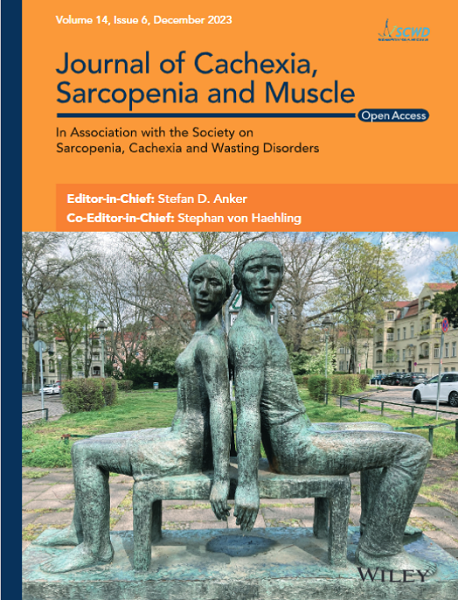GDF15 Neutralization Ameliorates Muscle Atrophy and Exercise Intolerance in a Mouse Model of Mitochondrial Myopathy
Abstract
Background
Primary mitochondrial myopathies (PMMs) are disorders caused by mutations in genes encoding mitochondrial proteins and proteins involved in mitochondrial function. PMMs are characterized by loss of muscle mass and strength as well as impaired exercise capacity. Growth/Differentiation Factor 15 (GDF15) was reported to be highly elevated in PMMs and cancer cachexia. Previous studies have shown that GDF15 neutralization is effective in improving skeletal muscle mass and function in cancer cachexia. It remains to be determined if the inhibition of GDF15 could be beneficial for PMMs. The purpose of the present study is to assess whether treatment with a GDF15 neutralizing antibody can alleviate muscle atrophy and physical performance impairment in a mouse model of PMM.
Methods
The effects of GDF15 neutralization on PMM were assessed using PolgD257A/D257A (POLG) mice. These mice express a proofreading-deficient version of the mitochondrial DNA polymerase gamma, leading to an increased rate of mutations in mitochondrial DNA (mtDNA). These animals display increased circulating GDF15 levels, reduced muscle mass and function, exercise intolerance, and premature aging. Starting at 9 months of age, the mice were treated with an anti-GDF15 antibody (mAB2) once per week for 12 weeks. Body weight, food intake, body composition, and muscle mass were assessed. Muscle function and exercise capacity were evaluated using in vivo concentric max force stimulation assays, forced treadmill running and voluntary home-cage wheel running. Mechanistic investigations were performed via muscle histology, bulk transcriptomic analysis, RT-qPCR and western blotting.
Results
Anti-GDF15 antibody treatment ameliorated the metabolic phenotypes of the POLG animals, improving body weight (+13% ± 8%, p < 0.0001), lean mass (+13% ± 15%, p < 0.001) and muscle mass (+35% ± 24%, p < 0.001). Additionally, the treatment improved skeletal muscle max force production (+35% ± 43%, p < 0.001) and exercise performance, including treadmill (+40% ± 29%, p < 0.05) and voluntary wheel running (+320% ± 19%, p < 0.05). Mechanistically, the beneficial effects of GDF15 neutralization are linked to the reversal of the transcriptional dysregulation in genes involved in autophagy and proteasome signalling. The treatment also appears to dampen glucocorticoid signalling by suppressing circulating corticosterone levels in the POLG animals.
Conclusions
Our findings highlight the potential of GDF15 neutralization with a monoclonal antibody as a therapeutic avenue to enhance physical performance and mitigate adverse clinical outcomes in patients with PMM.


 求助内容:
求助内容: 应助结果提醒方式:
应助结果提醒方式:


